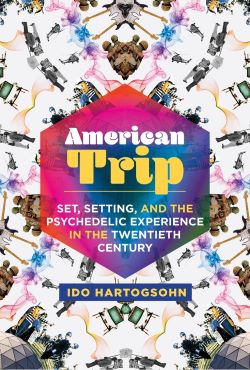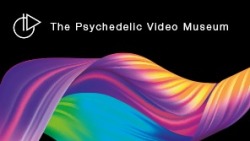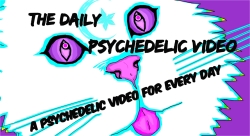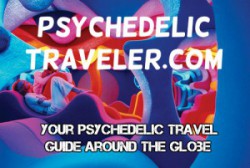Announcing the publication of American Trip: Set, Setting and The psychedelic Experience in the 20th Century
My book American Trip: Set, Setting and the Psychedelic Experience in the 20th Century is appearing today with MIT Press and I’m incredibly proud and excited!
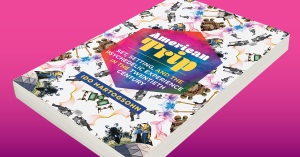 I’ve started working on this book over a decade ago, and it became the center of an intellectual and personal odyssey that led, among other things, to a series of groundbreaking papers that expanded our understanding of psychedelic experiences and their relation to context (set and setting)
I’ve started working on this book over a decade ago, and it became the center of an intellectual and personal odyssey that led, among other things, to a series of groundbreaking papers that expanded our understanding of psychedelic experiences and their relation to context (set and setting)
The concept of set and setting is undoubtedly the single-most central concept of modern psychedelic discourse. It points to the fact that the psychedelic experience has multiple potential modi. There is no ONE psychedelic experience, but rather that experience changes and transforms in relation to context.
The new book takes this idea to its final conclusion. It not only carefully describes how set and setting shapes experiences with psychedelics, but it also engages the broader more interesting questions like: how has the set and setting of contemporary Western culture shaped the psychedelic experience as we know it? How are our ideas of psychedelics and their effects shaped by our sociocultural settings?
The discourse on set and setting is commonly focused on the micro: Who is having the experience? Where? With whom? Carrying which intentions and expectations? Integrating how? These are all important questions, but the analysis was missing a key aspect: the fact that the set and the setting of a psychedelic experience are always rooted in a broader historical and cultural set and setting. All elements of individual set and setting are dependent on historical and sociocultural contexts. From expectations and intentions, to space, people and cultural beliefs.
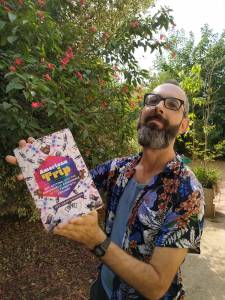 American Trip is the first book to put the concept of set and setting in this wider context. It departs from the premise that the set and setting of a psychedelic experience never exists in a vacuum but always as a part of a broader historical and sociocultural context.
American Trip is the first book to put the concept of set and setting in this wider context. It departs from the premise that the set and setting of a psychedelic experience never exists in a vacuum but always as a part of a broader historical and sociocultural context.
I’ve started writing of this book with an intriguing question on my mind: if we accept the common cliché that says that the sixties were like one long collective trip, what can the idea of set and setting teach us about the progression of this trip? i.e. what was the set and setting for this collective trip? How did the historical and cultural contexts of the 1960s shape this trip? And how have historical and cultural developments shaped the way we understand and experience psychedelics today?
The writing of this book led me to seven distinct schools of psychedelic research and use, from the psychotherapeutic to the military and from the spiritual to the artistic and the entrepreneurial. Each of these schools created its own micro-climate of set and setting, reshaping the psychedelic experience, producing wildly-divergent types of results, and – consequently – also immensely confusing researchers at the time.
The writing process also led me to explore a host of events and movements that shaped and sometimes continue to shape our perceptions of psychedelia: from the cold war to the sexual revolution, from cybernetics to the anti-psychiatry movement. Along the way I’ve learned to understand LSD as a psychedelic technology, literally a mind-manifesting technology – a technology that changes its colors, features and functions in relation to the various contexts in which it is injected.
I want to thank everybody who helped this book arrive to the world. My hope is that American Trip will provide us with new tools with which to think about psychedelics, and allow us to arrive at a richer, fuller understanding of psychedelic experiences in their social, historical and cultural contexts.
I know it’s not my place to say, but the new book is not only innovative and profound but also highly readable and entertaining, so I encourage you to get your own copy NOW (!) (here’s a link to BookDepository which seem to have better deals on the book) and let me know what you thought about it.
Here, finally, is the readers’ praise for American Trip.
American Trip presents a timely and invaluable guide to the crucial lessons that twentieth-century psychedelic history provides for the current psychedelic renaissance, and to using set and setting as a strategic tool for ensuring the healthy integration of psychedelics into society.
RICK DOBLIN, Founder and Executive Director of the Multidisciplinary Association for Psychedelic Studies (MAPS).
In clearly and rigorously exploring the single most consequential idea in psychedelic studies—the notion of set and setting—American Trip not only insightfully reframes the many histories of LSD, but offers a humanistic and reflexive alternative to the often simplistic discourse of today’s growing psychedelic industry.
ERIK DAVIS, author of High Weirdness: Drugs, Esoterica, and Visionary Experience in the Seventies.
American Trip guides its readers through the reflexive arts and sciences of set and setting used to study psychedelics, beckoning towards an intense pluriverse, full of beguiling guises, strange twists, and thrice-told tales.
NANCY D. CAMPBELL, Professor of Science and Technology Studies, Rensselaer Polytechnic Institute, author of OD: Naloxone and the Politics of Overdose
In this landmark book, Hartogsohn enlarges the traditional parameters of set and setting by including the larger social-cultural matrix. This expanded definition provides a more sophisticated understanding on how non-drug factors determine the nature of any psychedelic drug experience.
RICK STRASSMAN MD, Clinical Associate Professor of Psychiatry, University of New Mexico School of Medicine Author, DMT: The Spirit Molecule
American Trip amounts to a sociological enlightenment of our drug culture. Hartogsohn’s vibrant book shows how 1960s America made psychedelics do what they did and suggests that these wondrous molecules will do something altogether different in other times and places.
NICOLAS LANGLITZ, Associate Professor of Anthropology at the New School for Social Research, author of Neuropsychedelia: The Revival of Hallucinogen Research since the Decade of the Brain
